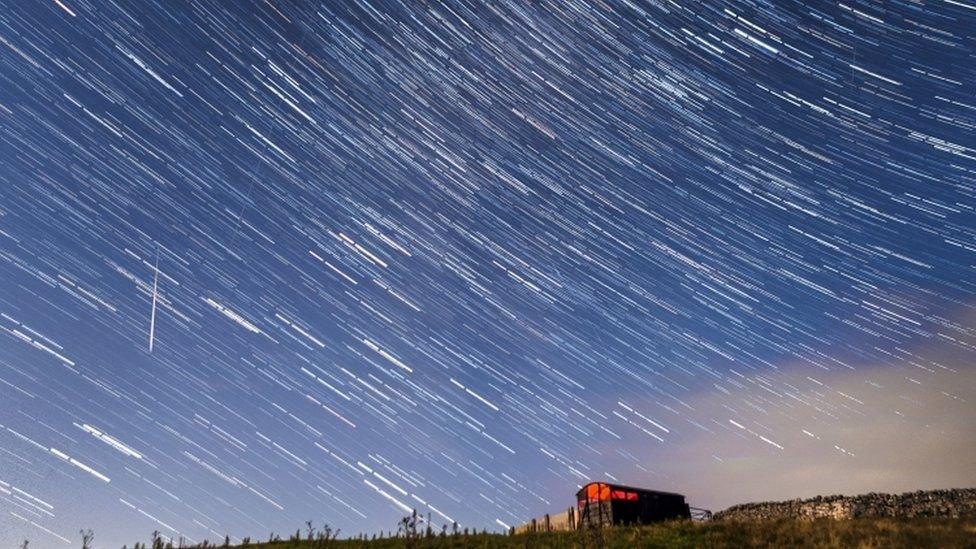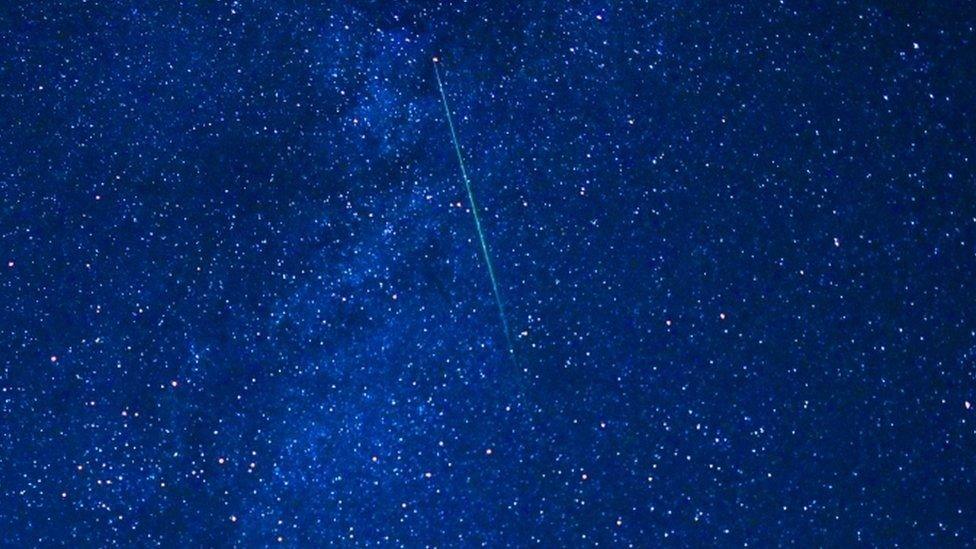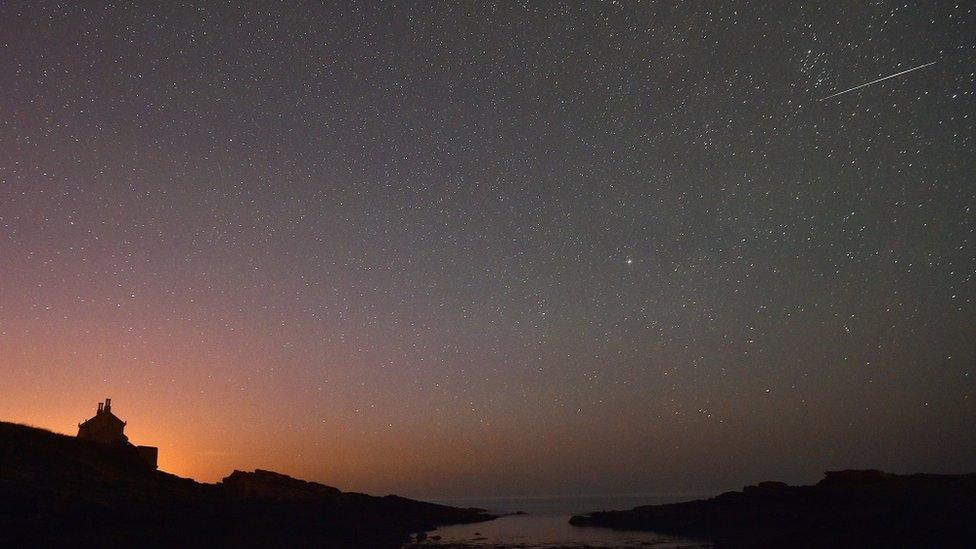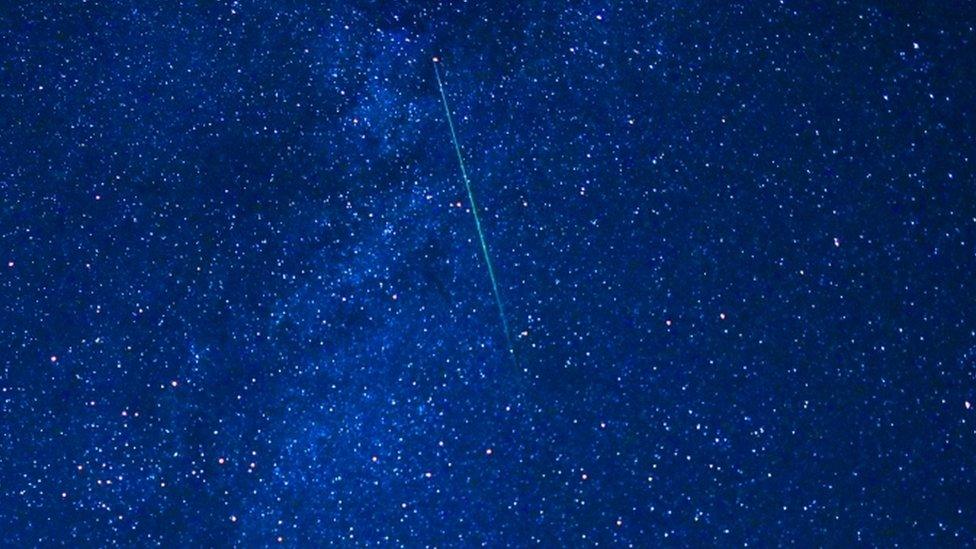Perseid meteor shower to be visible over Northern Ireland
- Published

The Perseid Meteor shower delivers some of the brightest meteors throughout the year
Late July into August is treat time for stargazers, depending on weather conditions of course.
The Perseid Meteor shower delivers some of the brightest meteors of the various displays throughout the year.
Usually, the Perseids start about 16 July and peak on the 11, 12 and 13 August, when there could be as many as 100 meteors in an hour.
They then taper away towards 23 August.
Terry Moseley, from the Irish Astronomical Association, said the display is caused by the earth moving into the debris from Comet Swift-Tuttle.
The earth passes through the debris every summer and the streaks are caused as the particles burn up as they hit the earth's atmosphere.
They can be viewed from anywhere when the night sky is clear enough and emanate from the constellation of Perseus, hence the name.

There may potentially be about 100 meteors visible in an hour during the Perseid Meteor shower
It is best to have as little light pollution as possible, so being out in the countryside and away from city lights is ideal.
Between midnight and the early hours, when the sky is at its darkest, is the optimum time to see them.
Terry also added that the absence of a full moon improves viewing and this year is ideal as the moon will only be in a 20% crescent phase and setting at twilight so moonlight will not interfere.
If you are heading out, bear in mind that it takes 10 to 20 minutes for your eyes to adjust from light to darkness.

The Perseids start around 16 July with the peak on 12/13 August
Get a good reclining chair, wrap up warm and just gaze at the sky.
If you can see the Milky Way in which Perseus lies, you have a good chance of seeing the meteors.
Towards the north east, after dark, you should see more meteors as Perseus rises in the east to be almost overhead through the night.
However, keep an eye on the forecast for those clearer nights around the 11, 12, and 13 August.
Even if it is cloudy then, if there are clear spells on the days either side you should still manage to see quite a few.
Related topics
- Published12 August 2020
